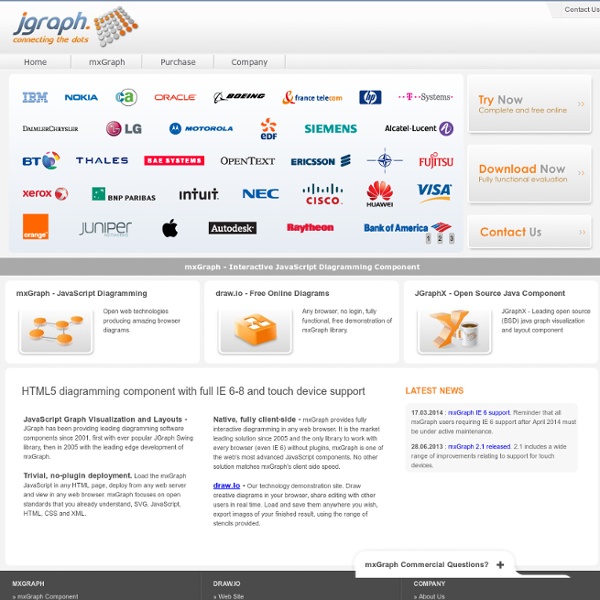



JUNG - Java Universal Network/Graph Framework Questionnaires, polls, Sociological polls, surveys of consumers, surveys of staff, polls, online surveys, questionnaires, Voting, Statistics, Analysis, Constructor of Forms, questionnaires Thinkmap visualization software facilitates communication, learning, and discovery.
Diagram Designer Graphics Freeware for Windows 98/ME/2000/XP/Vista/7/8/10 [Chinese version] Download installer (2 Mb) (hosted by FossHub) Description Simple vector graphics editor for creating flowcharts, UML class diagrams, illustrations and slide shows. Features Customizable template object palette. Version history Dictionaries Download and extract the zip files with the languages you need. DanishEnglish A note about dictionaries: A dictionary file is just a simple text file with an ordered list of words. Template palettes Template palettes sent to us by Diagram Designer users can be downloaded here. Download Online help There is no complete documentation available for Diagram Designer but on this page we have collected a number of documents and examples. Support Diagram Designer If you like this software then please support my work and the future development of the program, the documentation and the website. Click here to see how If you want to help test the latest beta version you can find it on the support forum.
Punctuated Equilibrium, Celestial Navigation, and APIs Journamatic - Your Journal. Automatic. jBPM In essence jBPM takes graphical process descriptions as input. A process is composed of tasks that are connected with sequence flows. Processes represent an execution flow. Each execution of a process definition is called a "process instance". jBPM manages the process instances. jBPM is based on the Process Virtual Machine (PVM) which is the JBoss community's foundation to support multiple process languages natively. As of version 5.0, jBPM also includes powerful business rules and event integration, and support for more advanced, flexible business processes. jBPM version 5 was the result of a merge of the jBPM project with Drools Flow, a sub-project of the Drools system. The current jBPM5 snapshot offers open source business process execution and management, including: See also[edit] External links[edit] Official website
APIs: the Glue of Cloud Computing